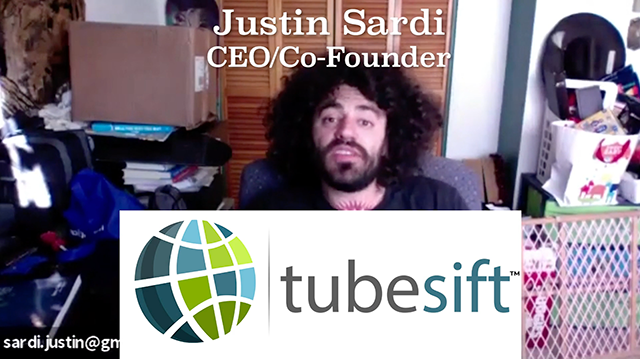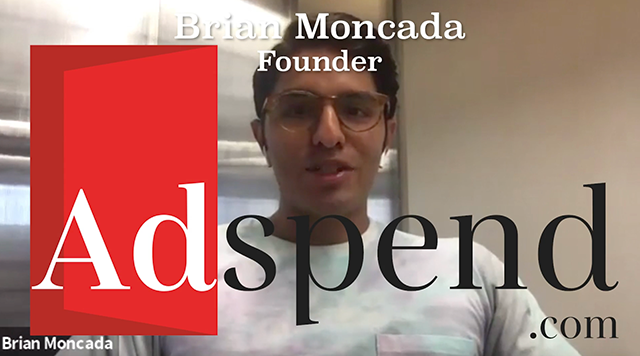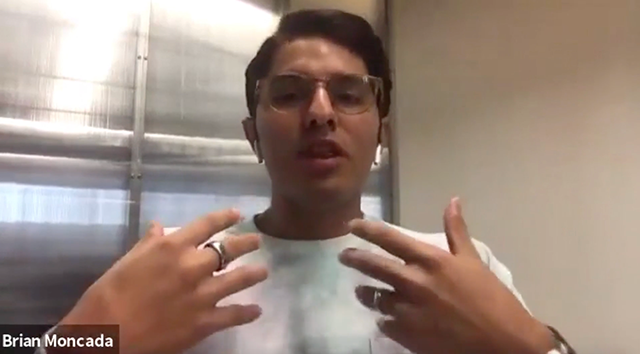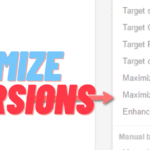 Membership TodaySign Up Now
Membership TodaySign Up NowVideo Transcript:
Scaling YouTube Ads to Sell more Products
Justin: Hey, what’s up, everybody? Justin Sardi, CEO, and co-founder of TubeSift here. Today, we’ve lined up a really cool interview with a YouTube ads expert, Brian Moncada, and really stoked to have him. He actually runs a really cool agency, specializing in helping digital course creators get their ads on YouTube and start selling more products (scaling YouTube Ads). So I got him on the call and just wanted to run through a few tips and tricks. Talk about what he does, some things he’s learned, and get some insight from him. So thanks for coming out today, man.
Brian: What’s up, Justin? Thanks for having me, man. Yeah, I appreciate it.
Justin: For sure, for sure. Well, yeah, if you want to introduce yourself. I know I gave you a little brief overview, but if you want to fill us in on a little bit more about what you do and how you use YouTube ads personally, that’d be awesome.

Introducing Brian Moncada, Founder of Adspend.com
Brian: Sweet. Yeah. So I actually started running YouTube ads three years ago when I was working for my old mentor and ran ads for his business, Dean Graziosi, and helped him scale up into the millions with different offers through his company. I actually have since, now focused on my own agency, Adspend.com, where we just focus on primarily YouTube ads for our clients. We focus on specifically info-product businesses, anyone who sells online courses, digital products, info products and anything online and are looking to get more leads and more customers using video ads on YouTube.
So we help them not only launch their campaigns from scratch, but also scale. Basically, a lot of the clients that work with us, they’re already running ads on Facebook, but they just haven’t cracked the code for YouTube yet because it’s a totally different platform. So we help them learn how to copy and paste those campaigns that are working on Facebook over to YouTube the right way. So that way, they can actually reach success a lot faster if they were to do it on their own.
But it’s been an awesome ride, man. I love doing it. I love working with clients one-on-one to be honest, because there’s nothing better than seeing a client campaign go from just struggling a little bit the first few weeks and then getting it dialed in, then where they’re just super happy, to where they’re getting their calendar filled or their sales just run up.
The differences between Facebook and YouTube Ads
Justin: Nice. Nice. Yeah. That’s cool you mentioned the whole taking it from Facebook to YouTube because it is a whole different animal. I’ve seen a lot of people just … They’re like, “Oh, I have this video that’s working on Facebook. Can I just use that for YouTube?” I’m like, “No, dude, you can’t.”
Brian: No.
Justin: They’re like, “Well, I’ve tried it. You know, YouTube ads don’t work.” I’m like, “Well, no wonder it doesn’t work. That’s not … ” It’s two different platforms, and people consume content completely differently on both of the platforms. You really need to keep that in mind when you’re moving from one to the other.
Brian: 100%. I actually literally just got off a call yesterday with this e-commerce brand that sells men’s grooming products. They said, “Well, YouTube didn’t work for us in the past.” When I actually got access to their ads account and went into the actual campaigns they were running, they were running one video ad, and that video ad was a simple two minute sizzle reel, sharing their story with no call to action, no specific offer, no benefit to the viewer. They just got zero conversions.
I’m like, “This is crappy video. No offense, but it’s just like you’re trying to replicate your success on Facebook over to YouTube. But the difference is there.” Facebook has copy. So the copy actually sells because the video gets their attention. Then they read the copy. Then they click. With YouTube, you got to sell in the video. Otherwise, you’re not going to get the person to click. Now of course this depends. But most of the time, the reason why you’re not having success is because you’re not creating the right video for YouTube specifically, talking to your most ideal customers. So it is very different. Yeah.
AdSpend’s Process for Advertising on YouTube
Justin: Yeah. A hundred percent. So, yeah. So you’re talking about basically you help course creators. So what’s the whole process you use to get somebody, let’s say, from start to finish if they’ve never advertised on YouTube? What’s the process look like?

Brian: Yeah, so typically, it’s actually pretty simple. Most of the time that we work with the client, they’re already running Facebook, like I said. So the key is actually getting them to create video ads now. Right? So we usually have each client that we work with, create five video ads. Three for cold traffic, two for remarketing. Very simple.
Using Different Video Ad Styles
The three cold traffic ads that we have them start with are based off a few things. So we actually help them write a very specific script based off their actual offer and use their sales page. We’re not going to replicate the wheel and try to reinvent a whole new script. We use the copy on their sales page and the best copy converting for them on Facebook. We combine those two elements and then that creates the hook, the actual story and education piece, and then the call callbacks at the very end.
So it’s a three-part script. It’s very simple, and we create three different versions of that. Now of course, the three different versions come from the hook itself because different stages of awareness per customer Someone that doesn’t even know your brand exists and someone that does know you exist, but hasn’t bought your products, or something that’s already in the middle of your funnel, that just is on the fence and hasn’t bought yet.
So there’s those three different stages of awareness that we go through with those scripts. We have them film those scripts. Usually we do three different variations of those video ads. So one selfie style, one more direct to camera, and then one more higher production B roll with all the elements you need. So once we create all those variations of those ads, we then split them up in the campaigns and start testing them, depending on the targeting.
The Launch Phase
So that’s the ad creation side of things, very summed up very quickly. But as far as the launching phase, for the targeting specifically, we start with five campaigns. One of which is usually going to be a remarketing campaign. So they’re already existing website visitors because that’s low-hanging fruit.
Justin: Right.
Brian: Another one of which is going to be a Google search campaign for their actual name or their brand name or their product, or actual course name because that’s another low-hanging fruit that they’re probably missing out on. Then the other three campaigns are going to be either depending on if they have a successful YouTube channel. A lot of the clients we work with sometimes do. So we remarket to their YouTube channel viewers as well, their subscribers, their commenters, whatever the case may be.
Then the other two campaigns are a mix of either keywords or custom intent. Those are the five campaigns we usually do time and time again, to start off with, when we launch. Then of course, as things progress, we start optimizing and then branching off into more broad topics, affinity audiences, or a combination of both.
Justin: Nice, nice. So I like how you make the three different videos. Do those all have the same script then basically?
Brian: All the same script. We’re just testing a few different things. We’re testing what resonates with the audience more, because for example, I’ve seen selfie style videos work better than high production video ads because they just seem more raw. They’re more real. They connect with the viewer a lot better. It’s not always the case, but it’s a lot of the times the case, specifically for experts and influencers that are selling online courses.
For someone who has an e-commerce brand or things like that, it’s more of, you need the higher production B roll, the quality and the actual time invested into it, where it’s not just selfie style. But then again, I’ve seen those work, too. So we’re really just testing each of those different filming styles and editing styles to see which one really resonates with the actual cold traffic campaigns.
Using Simple Videos
Justin: Nice. That’s funny you say that because I’ve actually noticed, I was actually talking on a little mastermind call I was on today. I was saying how I don’t know why, but the video, my best performing ad, hands-down, is one where I pulled out my phone and was like, “Hey.” It was just talking to my phone. I was walking my dogs. I was like, “Hey, I got an idea for an ad. I better shoot this real quick.”
Brian: Boom.
Justin: Shot it, no editing. One take. That was my hands-down, my best performing ad. We’ve tried to get super creative makeup, awesome ads. I was like, “This is going to be amazing.” But just the selfie style, just, “Hey, here’s what I’m going to show you” kind of thing worked extremely well. I do sell digital products as well. So does that make sense?
Brian: Dude, a hundred percent, man, because you were in the moment. You felt the gut to like, “Let me just film this right now.” You didn’t overthink it. You just did it. No one knows how to sell your product or service better than you do. Right? So even with my clients that we work with, I tell them, I say, “Hey, we’re going to send you a script. It has the different things that you should say based off how we think you would say it. But don’t follow it like a robot? The worst thing you can do is just read it word for word for word.”
Of course we do do that. It does work sometimes, but we’re not going to tell you how to sell your product or service because that’s what you do. You can do it the best yourself. Now, of course you need a little coaching sometimes to transfer that success over to YouTube. But the worst thing you can do is just be robotic and just not come from the heart because the most important thing is emotional and energetic.
Connecting with your Audience through Video
Especially with video, you got to be able to energize and intrigue the person, but also get them enthusiastic enough to where they want to actually click. So yeah, the best video ads always come from that place of just like, “Man, I just feel like filming a video ad right now,” from my experience, and those seem to perform the best. I don’t know why.
Justin: Right. For sure. For sure. No, that makes a lot of sense. Especially when you’re an expert, people do connect with you. I think that’s why YouTube ads are so powerful, especially for webinars and things like that, is because they feel like … people can see you. A video is way different than just reading some copy. You can actually connect with people, visual and audio, things like that, multisensory or whatever they call it. Then you go into it being like, “Oh, I’ve already interacted with this person.” It’s like a subconscious thing.
Brian: And it just gets their attention too, because you, just on the street, walking your dog, it’s different. They’re used to these, no offense to Grammarly is crushing it on YouTube right now with their ads because they’re just spending a bunch of money. Right?
Justin: Right.
Brian: But then they see this guy with his selfie, his iPhone camera, walking his dog. It’s like, what is this? Then obviously you have a great offer. So it just makes sense. It’s just like, “Well, this gets my attention enough to keep watching.” Then the offer makes sense enough to where I want to learn more, and then I click. So it’s a really cool way, man. YouTube ads is like, I think it’s … Obviously, we’re both biased, but it’s one of the best sources.

How to Scale your Ad Campaigns
Justin: Right, yeah, for sure. For sure. So you start with those five campaigns. Once you find a winning one, how do you go about scaling? Because I know that’s something we had talked about a little bit previously. You were talking about how something you do is actually help people scale if they are even having success on there, and they want to scale. I know that’s something a lot of people really struggle with it. I’ve even struggled with it before, I’m like, “Oh, this is working great. I’m just going to throw more budget at it.” Doesn’t quite work like that all the time.
Campaign Level Scaling
Brian: No. Yeah. So I’ve realized there’s, I think, the very simplistic way of thinking about it from my experience is there’s three different ways to scale. There’s the campaign level where you have a campaign that’s working. You don’t really want to touch it because it’s working so well. So one way to scale it, like you mentioned, is yeah, you could increase the budget. But sometimes when you increase or you just double the budget, your CPA goes from, let’s say it’s $30 where you’re happy with it, to all of a sudden it doubles and it goes to $60 over the next three days. It, for whatever reason, doesn’t optimize back down at $30 and you basically just killed that campaign, and it just never comes back to life.
So I guess in terms of increasing the budget, now this does depend though, because I have double budgets over and over and over again and it has worked and it has optimized and it has gone back down to the level you want. But I guess the methodical way of approaching it would be there’s different ways you can take it. So you can just increase it by 20%. Some people say 30%. Honestly, with a campaign that’s working, now I’m very hesitant to touch anything. I’ll usually leave it as is, but the way I’ll scale it is I’ll duplicate it. I’ll duplicate it. But I’ll either change one of two things.
I’ll either change the targeting because usually in that campaign, there’s one, there’s a couple of demographics that are working really well. It’s maybe an age range. It’s maybe a household income or it’s a certain targeting that you have in that actual campaign. I’ll duplicate the campaign that’s working. I’ll only add in the converting audiences or the converting demographics that I want within my target CPA range. I’ll exclude all the non-performing audiences or keywords or whatever the case may be.
So I’m just creating an iteration of the already-winning campaign and seeing if I can just milk it for even lower cost per conversions, because those are proven to work in this one that’s working, I’m not touching this one. So I’m just duplicating out and making an iteration of it based off that. I’ll usually just do the same budget that I started with over here and then slowly increase the budget on that. Rinse, repeat, rinse, repeat. That’s the one way to do it from the campaign level that I usually go about doing it.
Ad Level Scaling on YouTube
The other way is from the ads level itself. Now of course, when you have a campaign that’s working, usually there’s one video ad or a couple of video ads that are doing pretty well. But there’s usually one that just for whatever reason, like you said, just stands out and crushes it. Right?
Justin: Right, right.
Brian: So the way that we go about recreating the success of a video ad is we just simply change the hook in the beginning because if the core messaging is tight, if the call to action’s tight, usually it’s just figuring out another way to get another person’s attention that didn’t get their attention from the first variation of the video. So all we change is the first intro piece, the first 30 seconds before someone can actually get charged or before you can get charged by running the ad.
So we’ll just change the attention grabber at the beginning. Maybe we do something very off the wall, off the cuff, or maybe we just say something differently that’s similar to the video ad that we said in the beginning that’s working, but it’s just a different variation of it. So we just change a variation of the already-proven video ad. That’s the ad level.
Targeting Level Scaling
Then the other level is, let’s say you have a campaign that’s working to a targeting like keywords, for example, like a keyword of TubeSift. TubeSift is just crushing it. What we would do is we would have our client actually create a video ad with the hook, mentioning that keyword in the first five seconds or the first five to 10 seconds. So for example, I always use this example, but when I was working with Dean Graziosi for his ads, there was a keyword personal development. No, sorry. It was a law of attraction that was crushing it for his free plus shipping book offer.
I said, “Dude, this keyword’s literally getting thousands of sales every single week, and it’s getting cheaper than we want to pay, which is awesome. How can we make this even better? How can we scale this one keyword even more?” So I had him create a video ad, where he says in the very first five seconds, he goes, “The law of attraction. Is it really legit?” So it’s like, boom.
All we did in that campaign was we duplicated it out and only put the keyword, the law of attraction, with that one video ad. We just started spending the budget on that. So that’s three different ways that we go about scaling. Now of course, there is like other ways that I probably don’t even know about, but those are the ones that I’ve found that I can give tactically, and you guys should try out yourself.
Justin: Nice, man. I love it. Yeah. I’ve definitely noticed … So I do some consulting here and there and I’ve been working with some people. I was like, “Hey, change the … ” I accidentally said, “Change this.” This was a few months back. They changed one thing in the campaign. Just like it shit the bed. I was like, “Oh, no.” It was working so well. We could not get it to go back to where it was. Ever since then, I’ve been like, “Okay, don’t touch anything that’s working. Duplicate and then change.”
So I like how you said that because I’ve definitely noticed that as well. It took us a couple of weeks to get back on track after that. I was like, “What happened? It was working so great.”
Brian: Dude, it’s happened time and time again. I’m like, I’m never going to touch anything in the already-proven campaign. You know? It sucks, but that’s just sometimes how you have to go around the algorithm or whatever.
Justin: Right. Cool, man. Well, that was super helpful. If you got anything else to add, go for it. Otherwise, if you want to just let people know how to get in touch with you. I’m sure you might have some room for some more clients, anything like that. If you want to let people know how to book a call with you or anything like that, go for it, and thanks for your time.
The Defining Factor of a Successful YouTube Campaign
Brian: Yeah, for sure. I think one thing I will say, the biggest defining factor of a successful YouTube campaign isn’t just the media buyer or the agency you work with, or even just you in the weeds yourself in the actual campaigns. It also comes from the fact of having a really great offer. Having a really great backend, too, because if you’re so dependent upon being profitable on the front end, where you can’t afford to go negative every single day, then you might not be ready for YouTube ads. YouTube ads isn’t for everybody because it depends on where you’re at with your business.
You have to have somewhat of a solid backend to where you know, ideally your 30, 60, 90 day lifetime value on average for every new customer that comes into your ecosystem. Without that, it’s very hard to scale on YouTube because to scale, to really win, as you know, Justin, you need to know your numbers. But if you don’t know your numbers, you can’t afford to go maybe negative on a daily basis. Not that you want to. You want to be as profitable as possible. But sometimes you want to be able to afford to lose money on the front end because you know you’re going to make it up on the back end.
So you want to make sure that in order to really scale on YouTube, you got to have your numbers dialed in on the back end, or at least somewhat dialed in. You got to have a really good offer because if you have a shitty offer or, excuse me, a crappy offer, or you’re just selling on unethical stuff, then it just really, probably isn’t the best case scenario. But, yeah, if you guys want to get in touch with me, my website is adspend.com.
Using TubeSift for Finding Video Placements
We use TubeSift religiously. All my team does, as well, for all of our clients because it just is the best software for scraping video placements on YouTube, really going around. Because sometimes as you know, Justin, even with targeting keywords, you can’t just … Sometimes you’ll target a channel on YouTube or a keyword on YouTube, but it just, for whatever reason, won’t spend. But then you dissect all their videos on that channel using something like TubeSift, and then it just spends, and that’ll be an evergreen campaign because it’s your biggest competitor. They have your audience and you use TubeSift to scrape all their videos and steal all their subscribers or their customers and turn them into your customers.
So, yeah, highly recommend TubeSift. If you guys want to get in touch with me, once again, my website is adspend.com. We help info-product businesses launch and scale using YouTube ads. Yeah, we can chat.
Justin: Cool, man. Thanks for your time. Really appreciate the tips, especially the scaling ones. I dig that. Yeah, we’ll keep in touch.
Brian: Awesome. Take care, guys. Peace. Thanks, Justin.
TL;DW
 Membership TodaySign Up Now
Membership TodaySign Up NowResources
- Adspend.com – Brian Moncada’s Ad Agency
- TubeSift.com – Software for finding Placements
- Campaign Level Exclusions for YouTube Ads from the TubeSift Blog
- How to Find Monetized Placements for YouTube Ads from the TubeSift Blog
- YouTube Ads Case Study: Generate Sales with David Gillmore from the TubeSift Blog
- YouTube Ads Case Study: Scaling YouTube Ads with Kim Blanc from the TubeSift Blog
- The Power of YouTube Advertising (with Michael Szapkiw) from the TubeSift Blog



Comments are closed.